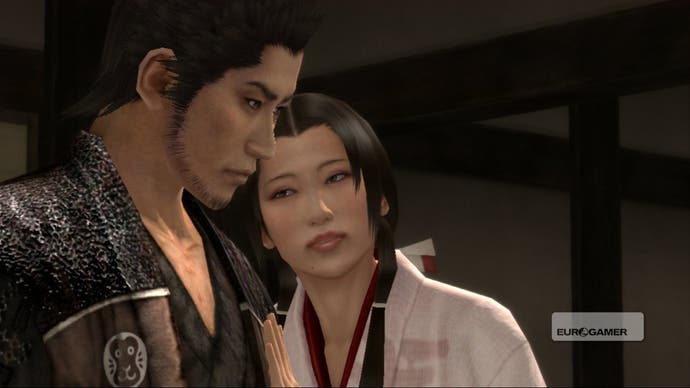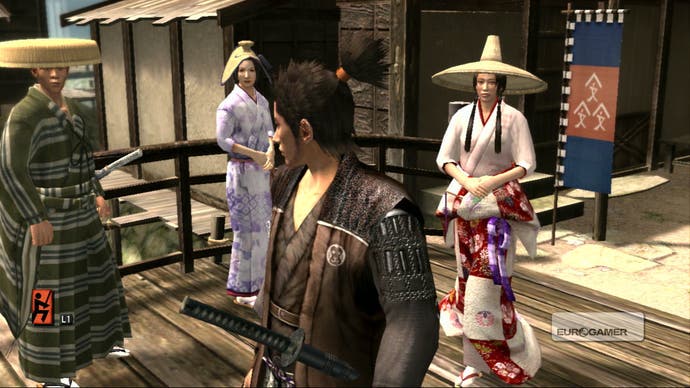Way of the Samurai 3
Ronin on empty.
Making rice cakes. Bribing a cat. Finding an old lady's knickers. Spanking a radish thief. These aren't the sort of things you expect in a samurai game, but you find yourself performing a lot of bizarrely inconsequential tasks in Acquire's disappointing third entry in its cult series of flexible feudal narratives.
You're a mysterious ronin, a masterless samurai looking for purpose in Amana province during the turbulent Sengoku era. Drawing, as always, from Kurosawa's Yojimbo, the game drops you in the midst of a power struggle between two warring factions. On one side you have the Fujimori Clan, powerful and corrupt. On the other, you find the Ouka Clan, a roughshod gang of outcasts trying to overthrow Fujimori.
Trapped in the middle are the inhabitants of Takatane village, a peaceful farming community taxed to the hilt by Fujimori and brutalised by Ouka bandits. It's up to you whose side you want to take, depending on who you talk to, how you react to key events and which jobs you choose.
As with the previous games, this is a game you can finish in a couple of hours. Completion isn't really your goal though, at least not in the singular sense. There are 21 different endings to be found, depending on how you align yourself with the different factions, as well as dozens of swords and spears to earn, upgrade and master.
Start a new game from a completed save and you inherit all the weapons, items and money you accrued, as well as unlocking new abilities based on the Samurai Points you were awarded for honourable behaviour. Every time you find a different path through the story, you're stockpiling for the next.

To begin with, the lack of handholding is liberating. Not just for the way it allows you to roam and discover the stories for yourself, but for the freedom it gives you in regards to your character.
You can kill whoever you like (apart from children) and you can even draw your weapon during cut-scenes if you decide you'd rather slice everyone to bits. Important events are highlighted on your map as "inklings" - the samurai equivalent of spider-sense, apparently - so there's always a beacon to tug you back into the story.
With such a freeform structure, however, too much depends on luck or foreknowledge of which actions lead to what outcomes, either from previous playthroughs or (for the desperate) the numerous FAQs that have sprouted online since the game's US release last year.

While the game earns praise for the sheer variety of paths on offer, and the flexible way the game reacts to your actions, the stories themselves are fairly feeble efforts, often lacking basic back-story and vital connective material. It's easy to spend hours shuttling between oblique cut-scenes and various quest givers, chalking up experience and cash, but with no clear idea of the wider context.
Unless you click into one of the game's pre-defined grooves, the experience can be piecemeal and confusing. At its most frustrating, you'll find yourself reaching the end of the game with no understanding of how you got there or what it means, fighting characters you thought were friends, or assisting a faction you thought you were opposed to fight.








